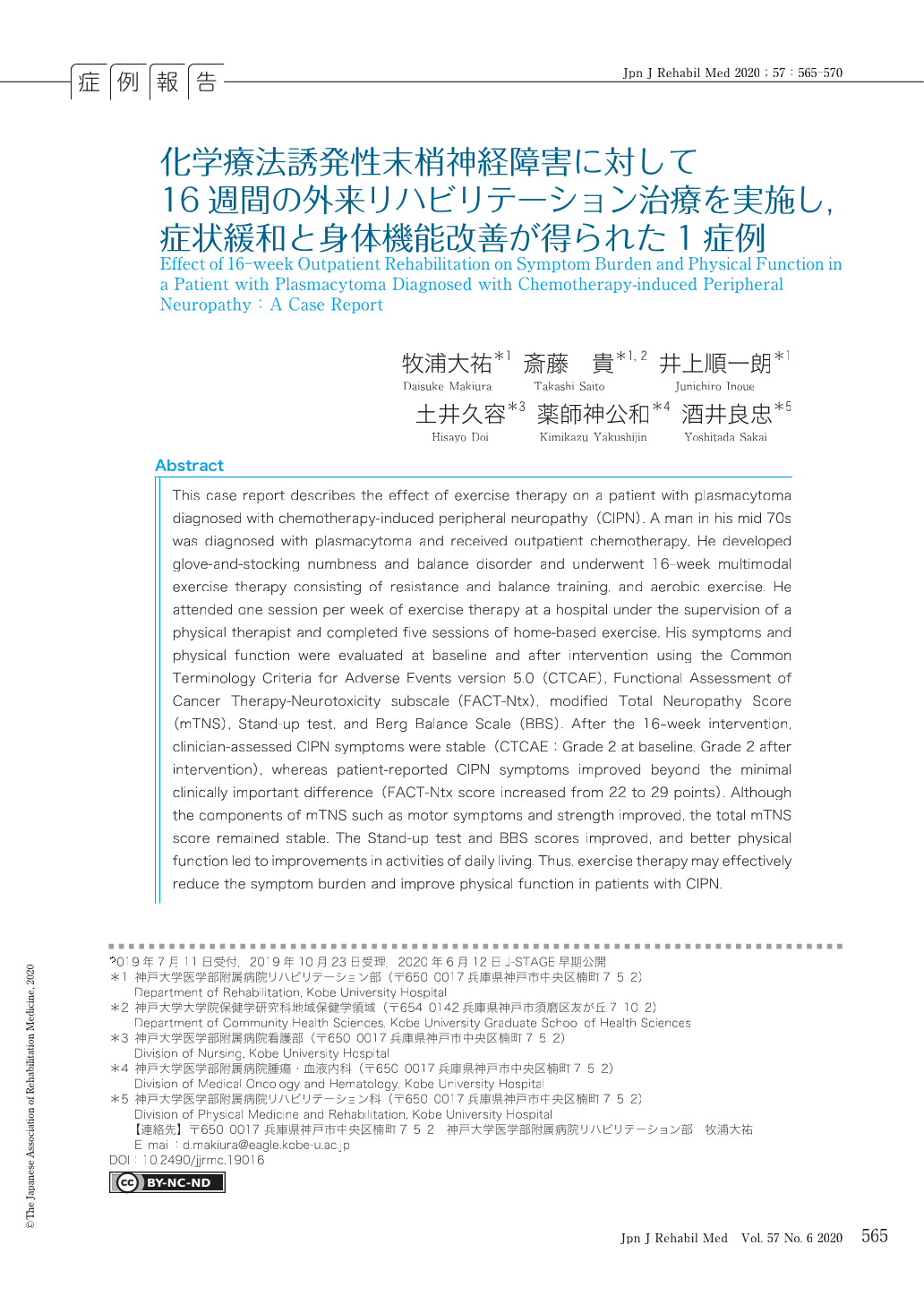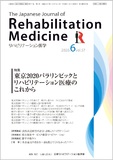Japanese
English
- 販売していません
- Abstract 文献概要
- 1ページ目 Look Inside
- 参考文献 Reference
はじめに
化学療法誘発性末梢神経障害(chemotherapy-induced peripheral neuropathy:CIPN)は,がん薬物療法に伴う一般的な有害事象であり,がん患者の身体機能の低下や転倒1),健康関連quality of life(QOL)の低下2)を引き起こすが,有効な治療法が確立されていないのが現状である3).運動療法は,がん患者の身体機能と精神・心理機能,健康関連QOLの改善に有効であることが報告されているが4),CIPNへの効果を示した報告は少ない.
今回,CIPN患者に対して運動療法を行い,CIPNの症状緩和と身体機能の改善が得られた症例を経験したので報告する.症例には,本報告の目的と内容について説明し,書面にて同意を得た.
This case report describes the effect of exercise therapy on a patient with plasmacytoma diagnosed with chemotherapy-induced peripheral neuropathy (CIPN). A man in his mid 70s was diagnosed with plasmacytoma and received outpatient chemotherapy. He developed glove-and-stocking numbness and balance disorder and underwent 16-week multimodal exercise therapy consisting of resistance and balance training, and aerobic exercise. He attended one session per week of exercise therapy at a hospital under the supervision of a physical therapist and completed five sessions of home-based exercise. His symptoms and physical function were evaluated at baseline and after intervention using the Common Terminology Criteria for Adverse Events version 5.0 (CTCAE), Functional Assessment of Cancer Therapy-Neurotoxicity subscale (FACT-Ntx), modified Total Neuropathy Score (mTNS), Stand-up test, and Berg Balance Scale (BBS). After the 16-week intervention, clinician-assessed CIPN symptoms were stable (CTCAE:Grade 2 at baseline, Grade 2 after intervention), whereas patient-reported CIPN symptoms improved beyond the minimal clinically important difference (FACT-Ntx score increased from 22 to 29 points). Although the components of mTNS such as motor symptoms and strength improved, the total mTNS score remained stable. The Stand-up test and BBS scores improved, and better physical function led to improvements in activities of daily living. Thus, exercise therapy may effectively reduce the symptom burden and improve physical function in patients with CIPN.

Copyright © 2020, The Japanese Association of Rehabilitation Medicine. All rights reserved.


